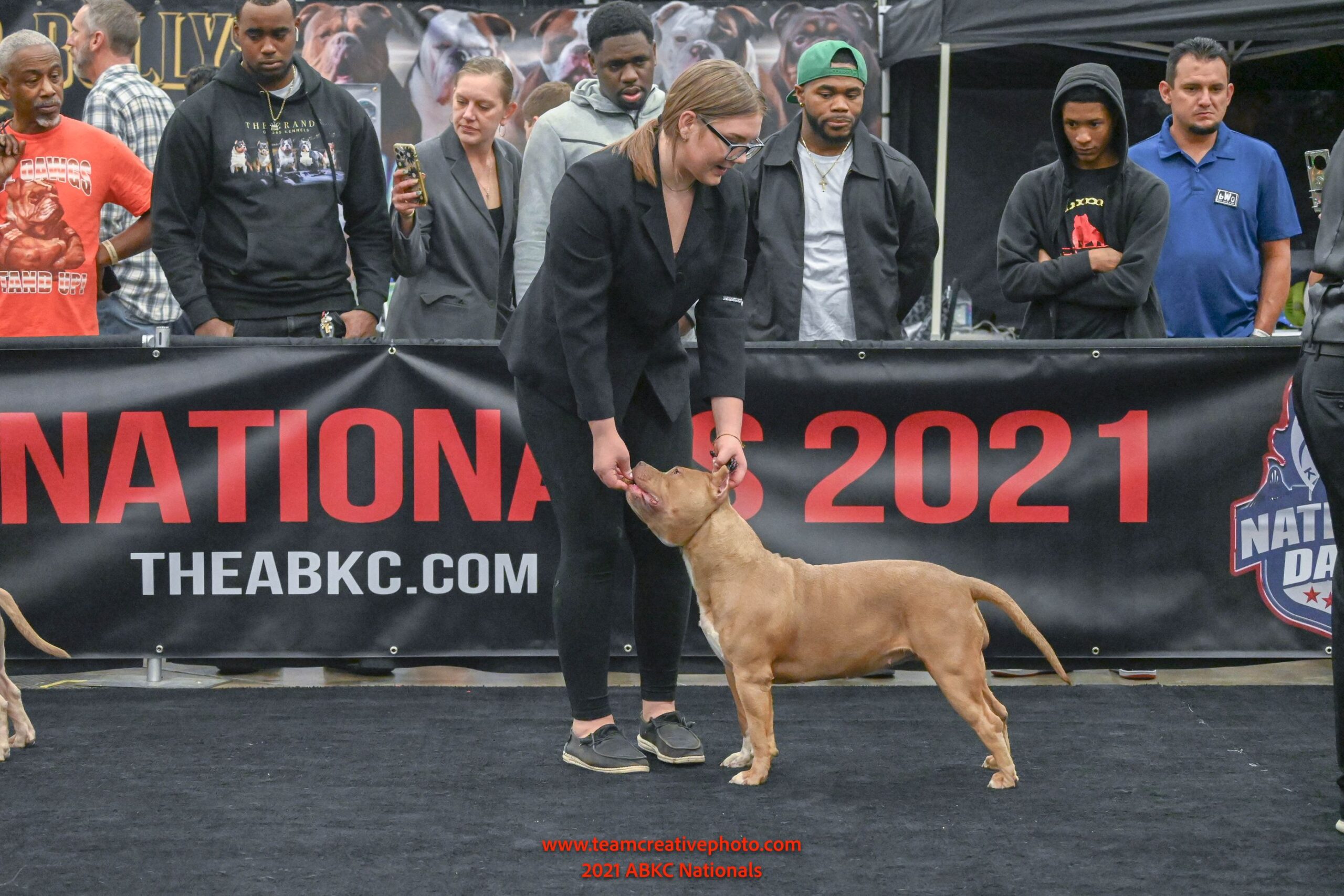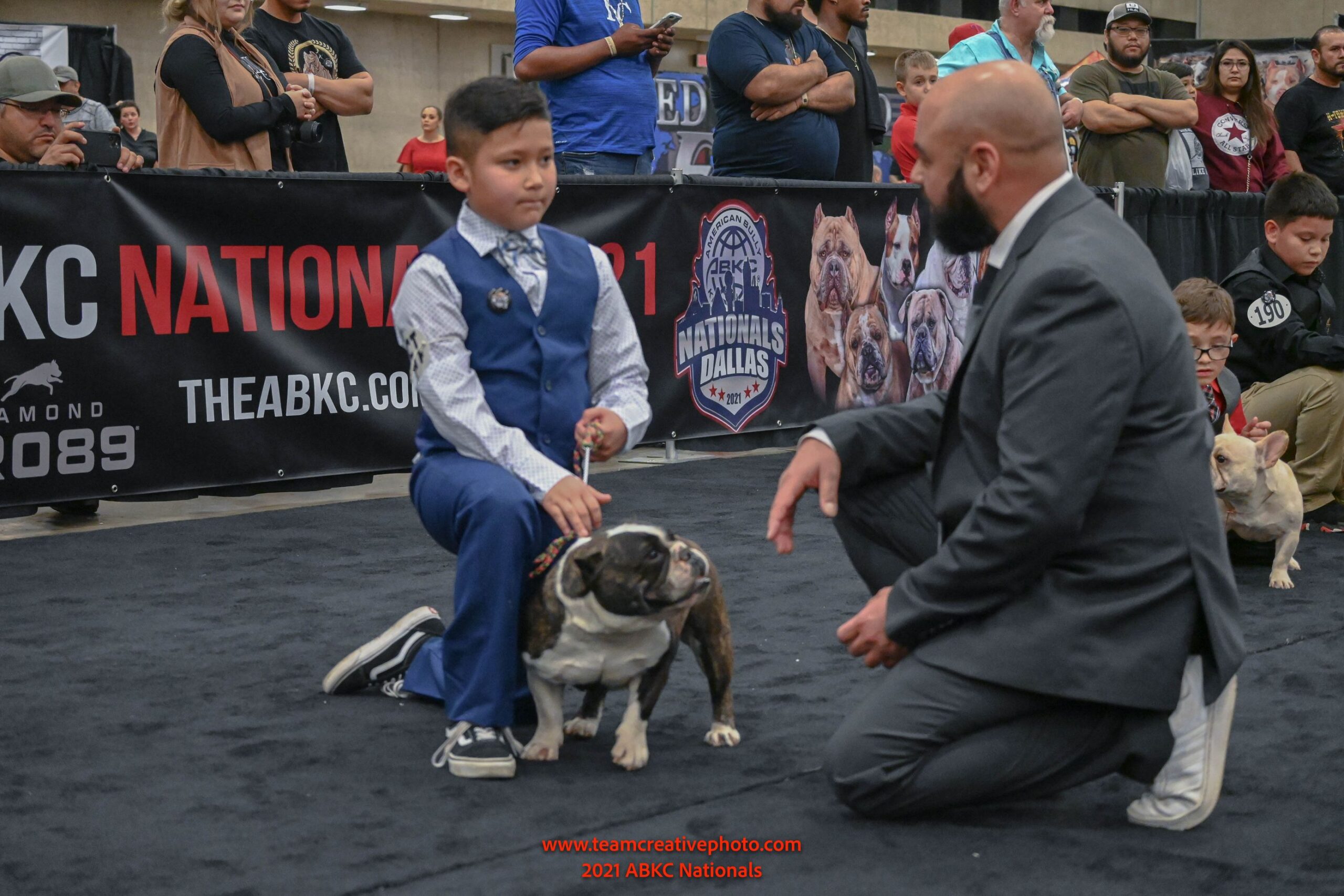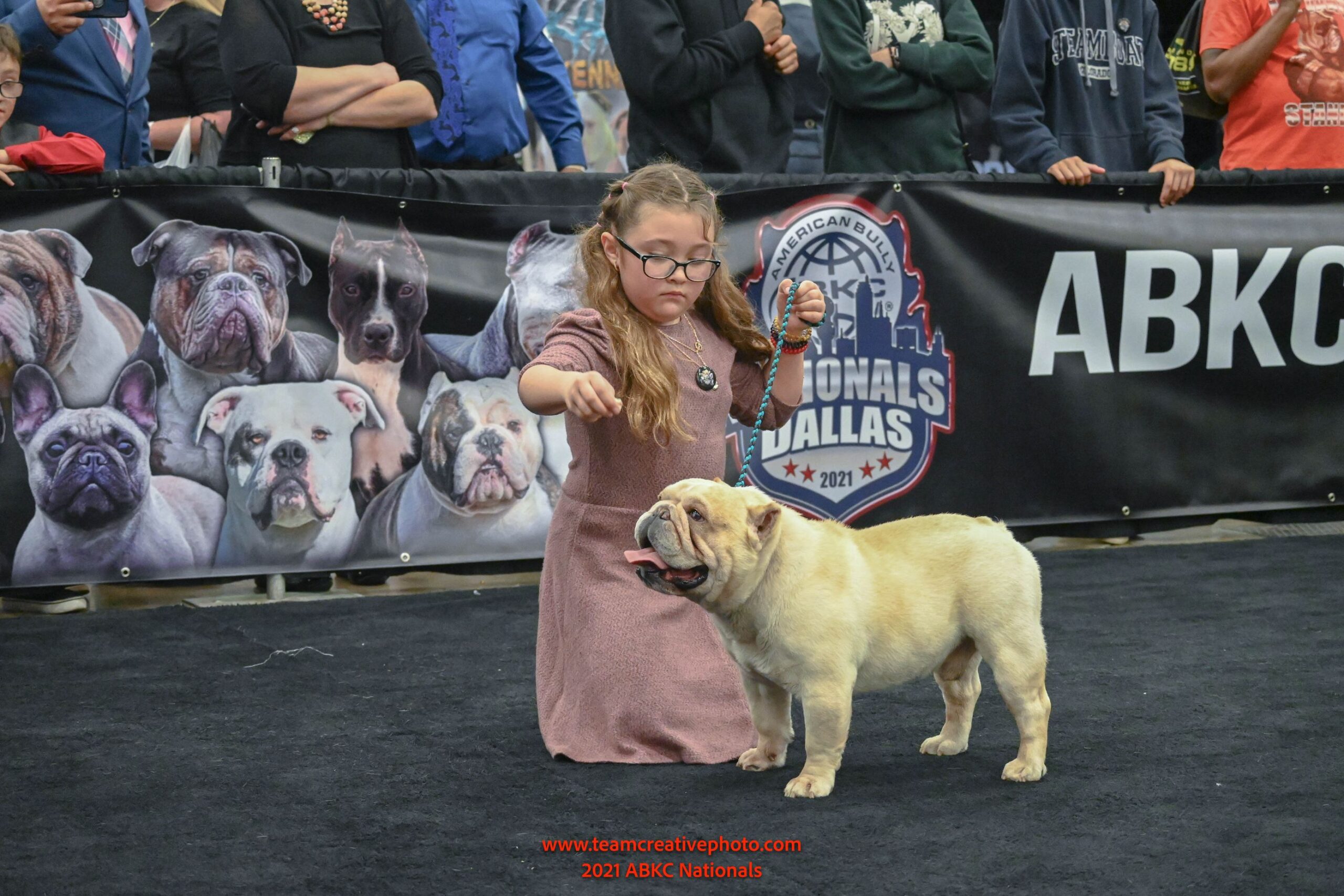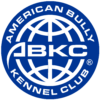Jr. Handlers



The ABKC Junior Showmanship Program was created to educate, teach and encourage our junior handlers in the sport of dog showing (conformation or performance), in basic dog anatomy, in promoting of responsible ownership and good breeding practices. The ABKC Junior Showmanship Program will recognize the achievements of our Junior Handlers and will reward both participation and excellence in various aspects of the sport of dog showing. The ABKC believes that the children that get involved in the sport of dog showing are the future of the ABKC and education and good sportsmanship is the key. Teaching children is an honor and a privilege that carries with it a moral responsibility to contribute to the healthy character development of junior handlers. Members of the ABKC who equate trying your best as the definition of success — and parents who value, expect, and demand good sportsmanship from their child — help shape the moral, ethical, and spiritual character of children.
Half-pint Showmanship Class: Children 2-4 years of age as of January 1st of that current calendar year. Parents are required to accompany their child and dog in to ring to ensure the safety of handlers and their dogs. All junior handlers will receive a participation ribbon.
Limited Showmanship Class: Children 4-8 years of age as of January 1st of that current calendar year. All junior handlers will receive a participation ribbon.
Novice Showmanship 8-13: Children 8-13 years of age as of January 1st of that current calendar year who have not won three 1st place ribbons, with competition. After three 1st places wins continuing into open division.
Open Showmanship 8-13: Children 8 years to 13 years as of January 1st of that current calendar year that have won three or more 1st place ribbons in the Novice division. Junior Handlers 13 years of age (as of January 1st) may move up to Open division , or if child has not earned at least one 1st place in the Open 8-13 division, child may opt to enter Novice 13-18. If child has earned one or more 1st place ribbons in Open 8-13, child must move to Open 13-18.
Novice Showmanship 13-18: Children 13-18 years of age as of January 1st of that current calendar year that have not won three 1st place ribbons in novice or one 1st place ribbon in Open.
Open Showmanship 13-18: Children 13-18 years of age as of January 1st of that current calendar year that have won three or more 1st place ribbons in Novice or one first place ribbon in Open.
Best Junior Handler: First place winners from Novice 8-13, Open 8-13, Novice 13-18 and Open 13-18 compete for best overall Junior Handler. Half-pint and Limited participants are not eligible to show in this class.
Any dog, whether intact or altered, with or without registration papers may be entered in this class. The handler is the only participant of the team that is being evaluated.
NOTE TO PARENTS: It is extremely critical that you exercise care when choosing a dog for your child to handle. Dogs can be very excited when in the ring, therefore please choose a dog that is experienced, mannerly, and that your child has a rapport with. It is of utmost importance that we avoid any injuries or incidents that may negatively impact our children and/or the dogs. If you have questions about whether a dog is suitable for the age/size/experience of the child, please contact one of the ABKC judges listed at www.theabkcdogs.org
A. To be judged on – Does the dog and handler appear to work as a team? 1) Presentation of breed being shown a. Does the dog and handler appear to work as a team? b. Is the dog under the handler’s control? c. Is the dog moving correctly and safely around the ring? d. Is the dog being presented with minimal effort? e. Is the dog presented in such a way that its faults are minimized? 2) Skill in individual dog presentation a. Is the dog presented in a way where its faults are minimized? b. Is the dog interested in the handler and does it appears at ease? c. Is the dog responsive and attentive to handler? d. Is the dog presented with minimal effort? 3) Knowledge of Ring Procedure a. Does the handler keep a distance between dogs to avoid crowding? b. Does the handler follow directions? c. Can the handler execute a pattern if asked? B. Is the handler knowledgeable and competent in basic care, anatomy, breed standards and handling of dogs: – Things they should know and parents should teach at home 1) Does the handler know names of basic parts of a dog? (see diagram) a. Hock b. Elbow c. Stifle d. Croup e. Muzzle and flew f. Withers g. Tail h. Shoulder i. Forearm j. Hip k. Back l. Occiput (poll) m. Top skull n. Crest (of neck) o. Underjaw p. Forechest 2) Can the handler answer basic questions about dog care? a. How does your dog cool himself off? (panting) b. What type of food does your dog eat? c. What type of insect can give a dog heartworms? (mosquitoes) d. How can your veterinarian check your dog for worms? (Check his fecal matter) e. What types of foods are bad for dogs? (Some milk products, cooked meat, raisins, grapes) f. How old is your dog? 3) Does handler know the Breed Standard? – Questions like: a. What is angulation? b. What are faults in an American Bully? – Kinked tail
Twisted tail
Knotted tail
Long tail
Curled tail
Overly Short tail
Pink or Albino eyes
Undershot mouth
Overshot mouth
Severe turn fronts
Severe turn to rears
cryptorchidism-undesended testicle 4) What are disqualifications? – Displaying or possessing aggressive behavior towards humans C. Appearance and conduct of dog and handler 1. Grooming and trimming; has effort been made to make the dog look clean and presentable? 2. Is the handler clean and properly dressed? Clothing should be neat and comfortable; no tank tops, shirts with writing, baggy pants or inappropriate footwear. 3. Is the handler prepared and confident? 4. Is the handler educated? D. Good sportsmanship in and out of the ring should be emphasized at all times. Handlers to be penalized for: 1. Excessive crowding of dogs 2. Dropping/tossing bait in the ring 3. Talking to other handlers in the ring (talking to dog or judge is acceptable) 4. Not being congratulatory to winners in each class
JUDGING PROCEDURE:
A. Dogs and handlers enter in a counter-clockwise direction with dogs at left side. B. Each dog is presented to judge in a stacked position C. Handler shows judge the dog’s bite (may be omitted in Half-Pint and Limited classes) D. Move/gait the dog with the class and by itself in a pattern (down and back, left turn, right turn, about face or combination) E. Answer a question from any of the above sections.
DISQUALIFICATIONS:
Any junior that is seen abusing their dog or, using excessive force or acting in an unsafe manner shall be asked to leave the ring.
If any handler that is found to be under a controlled substance they will be asked to leave the ring having their awards revoked and will be asked to leave the show ring grounds, by the judges’ or show hosts’ discretion Competing dogs may be asked to leave if aggressiveness towards any other dog or human is evident.
POINT SYSTEM:
At the end of the year, at Nationals, an award and/or scholarship will be presented to the Junior Handler with the highest points overall at the end of each year.
POINT SCHEDULE
Novice and Open Showmanship, all ages:
POINTS: 1st Place – 15 Points 2nd Place – 10 Points 3rd Place – 5 Points Best Junior Handler (With Competition) – 25 Points Best Junior Handler (Without Competition) – 10 Points
